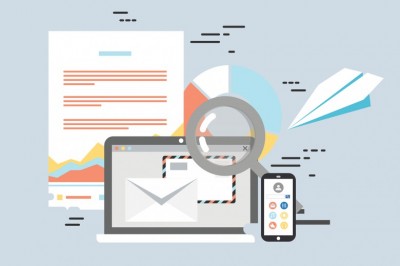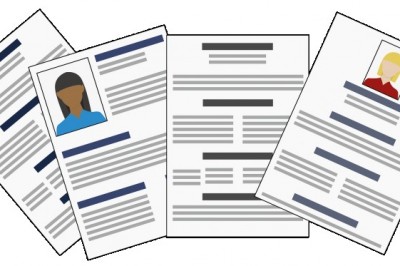Tips for Using Electronic Communication in the Workplace
On the first day back at work this year an employee at one of my clients sent an email containing her new years resolutions to her to all the email addresses in her work group - by mistake. She had meant to send the email to her friends group, but had clicked the wrong button. The email included a graphic outline of her strategy for moving up the corporate ladder which meant walking over a few important people, one of which was her immediate boss. Now understand that this email went to her entire work, supplier and customer database - including her boss and the CEO. As if that was not bad enough it also listed her romantic desires pertaining to one of her colleagues.
In todays world, with all the buzzing and beeping of new technological gadgets, communication is changing daily. Instead of sending a business letter across the ocean, you can save on postage and speed up the delivery by emailing the letter in a quick second - and it will be received by more than one recipient immediately. You can page or MSM your co-worker instead of playing phone tag while trying to reach them. The workplace is often filled with the sounds of email box alerts and faxes being received and sent out and the printer is almost always hot with some departments weekly schedule. While email and other forms of electronic communication available to us in the workplace have huge benefits there is also a down side if they are not used carefully.
By using email, Facebook, MySpace, forums, USENET news groups, electronic bulletin, twitter, blogs, instant messaging, text messaging, Skype and other electronic forms of communication messages are sent far and wide very quickly. We dont always take time to read our messages after we have compiled them and are quick to hit the send button. This can get us into trouble.
There are advantages and disadvantages of email. Although the advantages outweigh the disadvantages we need to practise caution.
Here are a few guidelines for avoiding problems when using electronic communication in the workplace:
- Double check the recipients of your email before sending. Make sure that you are not sending it to the wrong people. The damage done to the abovementioned persons reputation was severe and could not be undone. In addition she had a disciplinary hearing. It may be advisable to set up an account with one of the free e-mail services and use that account for personal emails instead of your work email address.
- Be careful when clicking reply to all on an email. Do you need to include all those people in the communication?
- Think twice before copying people, such as the recipients boss, on an email where there is a dispute or disagreement. Try to resolve issues first without this aggressive approach. It will cause ill feelings. Sending an electronic message is more permanent than a verbal conversation. People calm down and feelings change with time but an email or electronic communication can stay around forever. You cant get it back once it has been sent and it can be used against you.
- Discuss sensitive issues in person. Dont put them in writing as they can be forwarded, copied and pasted and taken out of context.
- Dont send a message when you are upset or annoyed.
- Dont send anything electronically about a person, if you would not be happy with them seeing it.
- Remember to check previous communication in the message body and delete them if necessary.
- Messages placed on news groups has your name attached to it and can be searched by anyone for years to come. Many employers do internet searches to see what they can find about employees or potential employees. Before you place such information consider whether you would you want a prospective employer to see that type of information.
Free email tracing services will find the e-mail address of a person by means of a quick e-mail address search. Some sites specialize in locating email addresses by doing free email address searches such as the Hotmail email account search. This means that you can be tracked down and can end up receiving unwanted spam.
Dont be put off by the negatives of email. Email is extremely convenient. I can check my email online and can check email from any computer, anywhere in the world. There is an abundance of free e-mail providers such as AOL e-mail, Yahoo e-mail, Hotmail email addresses directory and even kids free email accounts.
Electronic communication is about working more effectively and powerfully in the workplace. Its about communicating the many messages you have to get across in the clearest way possible and as quickly as possible.
Use modern technology available to you to be resourceful in getting your message across? One particularly useful tool for effective employee communication is the intranet. The benefits of the intranet are high. The purpose of the intranet is to provide information to staff quickly and timeously. Fedex ground HR intranet and United Airlines employee intranet Skynet are examples of successful intranets.
You could post your presentation on the company intranet - that way your company saves paper and money, plus it has the advantage that employees can view the slide show whenever they please. You can create awareness on all workplace communication issues like never before.
Below are some other types of electronic communication and ways to use them.
- Use an electronic internal newsletter to drive regular communication on a monthly, fortnightly or weekly basis. Encourage two-way communication through the newsletter by using an electronic team briefing medium via Skype or video conferencing and include discussion topics requiring feedback. Feedback can be done via a questionnaire attached to a PDF.
- Use an email signature to communicate a further message such as greening the environment or to promote recycling. This message can be added below the persons name and contact details. Each message can be tailor made with a specific message that is relevant.
- Electronic teasers and flash mailers can be used instead of posters and leaflets.
- An electronic vote line can be set up on the intranet or internet.
- SMS or MMS messages can be sent to staff members cell phones.
- Include interactive, fun electronic elements that are quick and easy to update such as electronic games.
In summary, we are living in exciting times in terms of communication as we have a variety of exciting tools at our disposal. There is no longer any excuse for submitting boring communications.
About Author
Bridget Gore is the editor of Workplace-Communication.com - helping you improve communication at work. Find more about electronic communication types at her site.
























